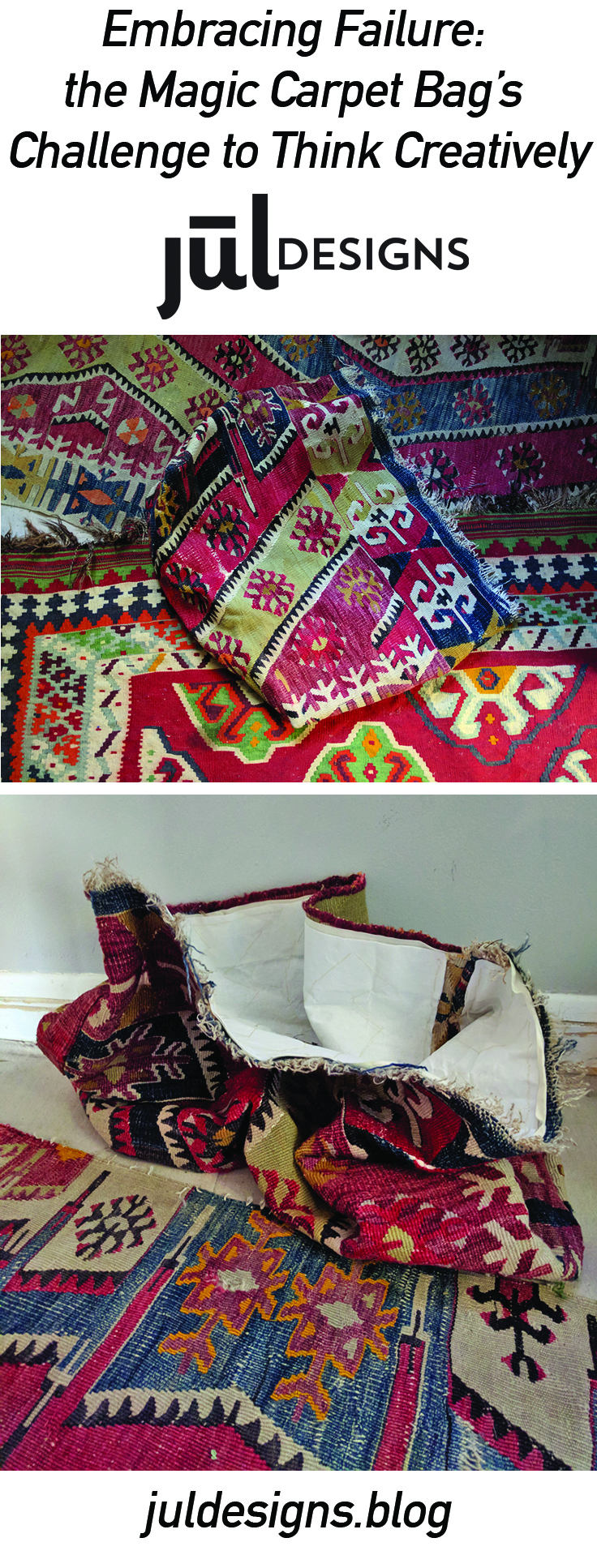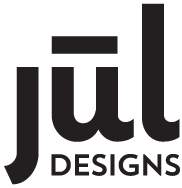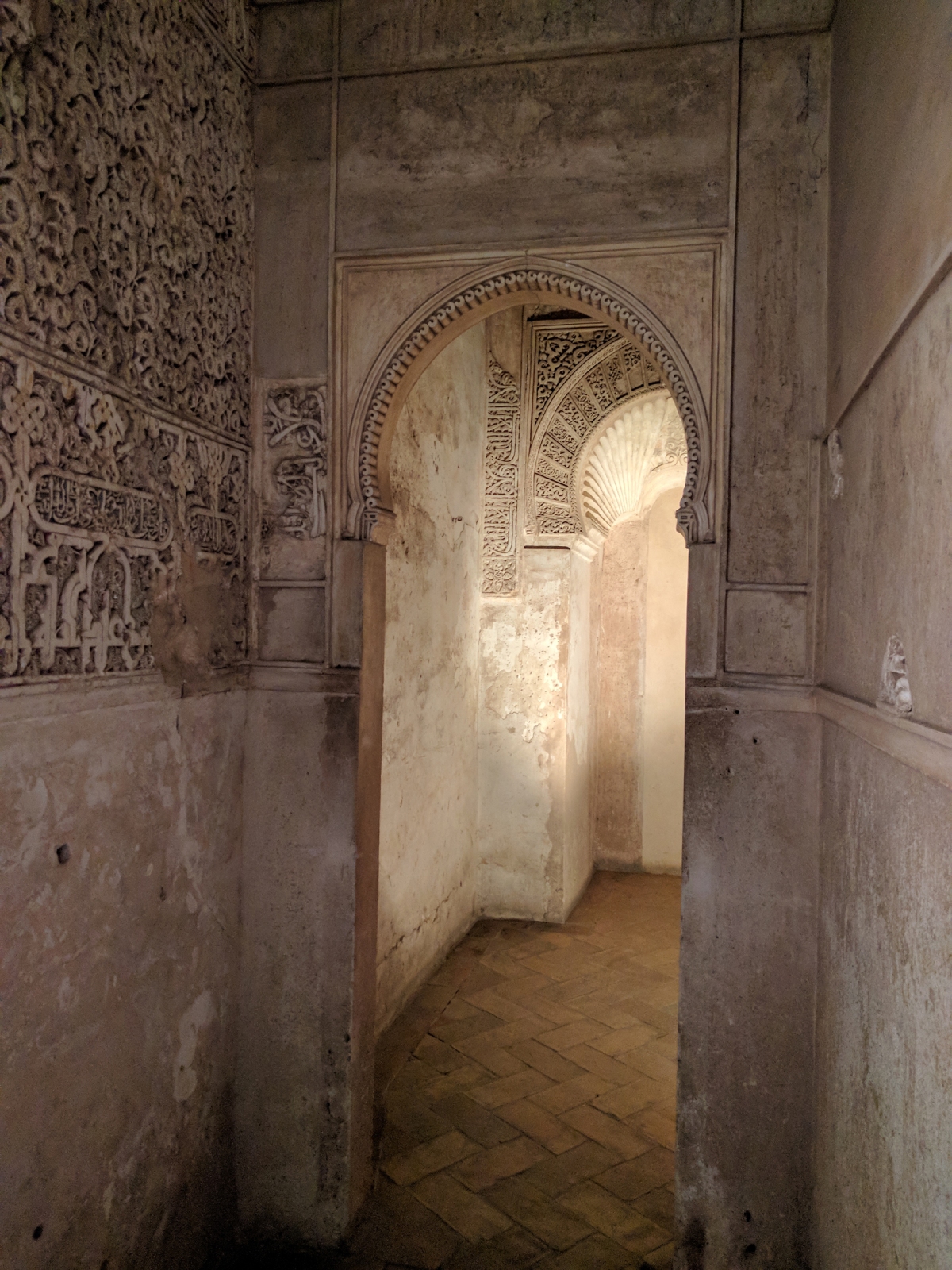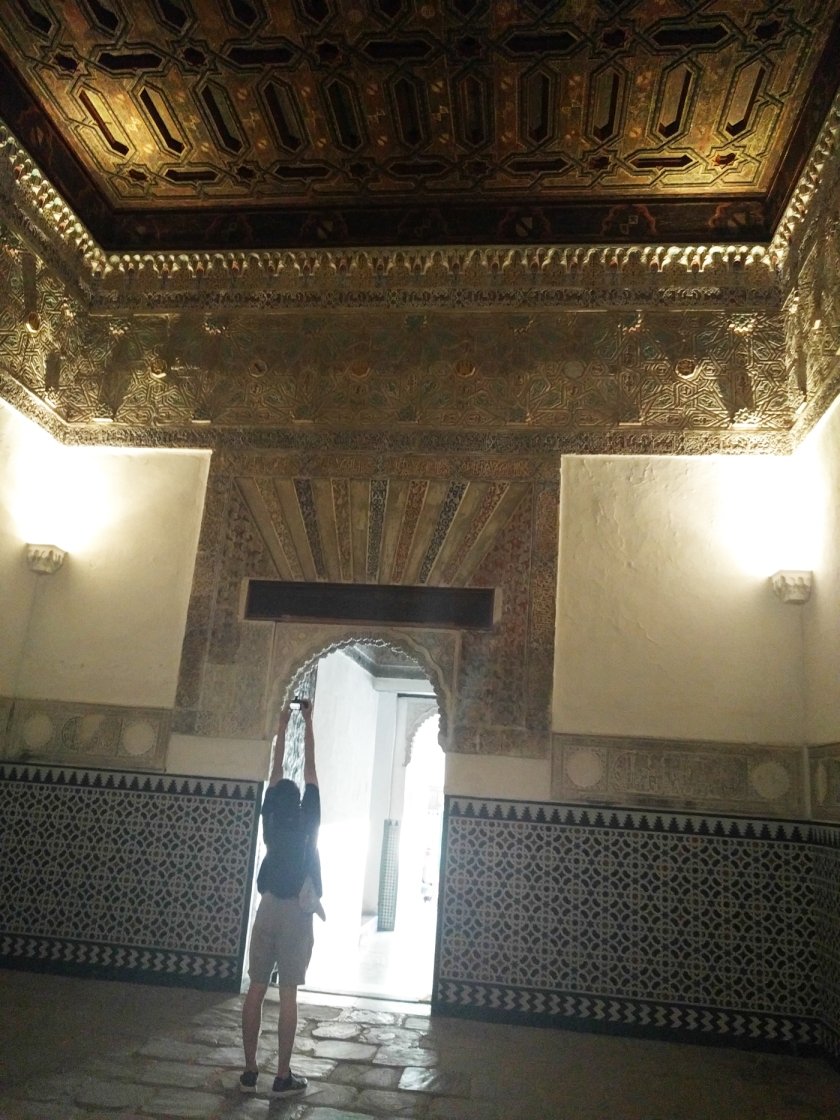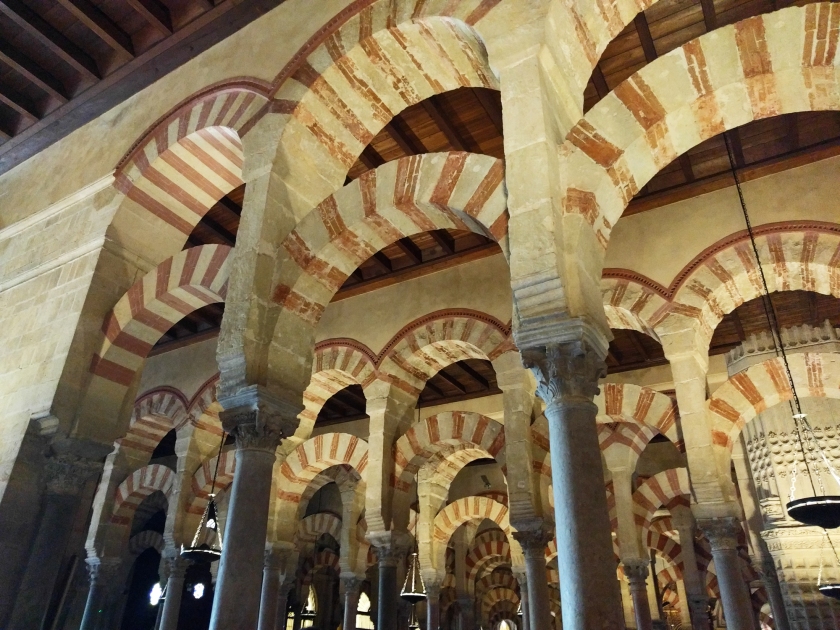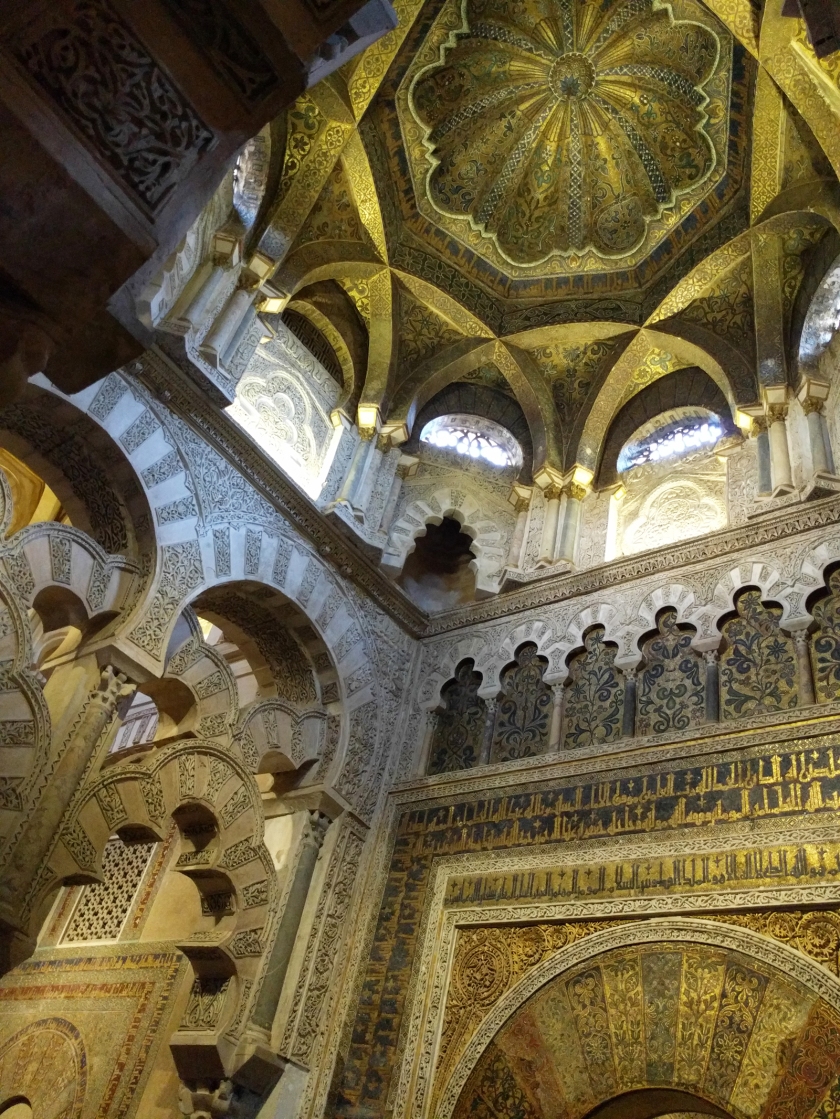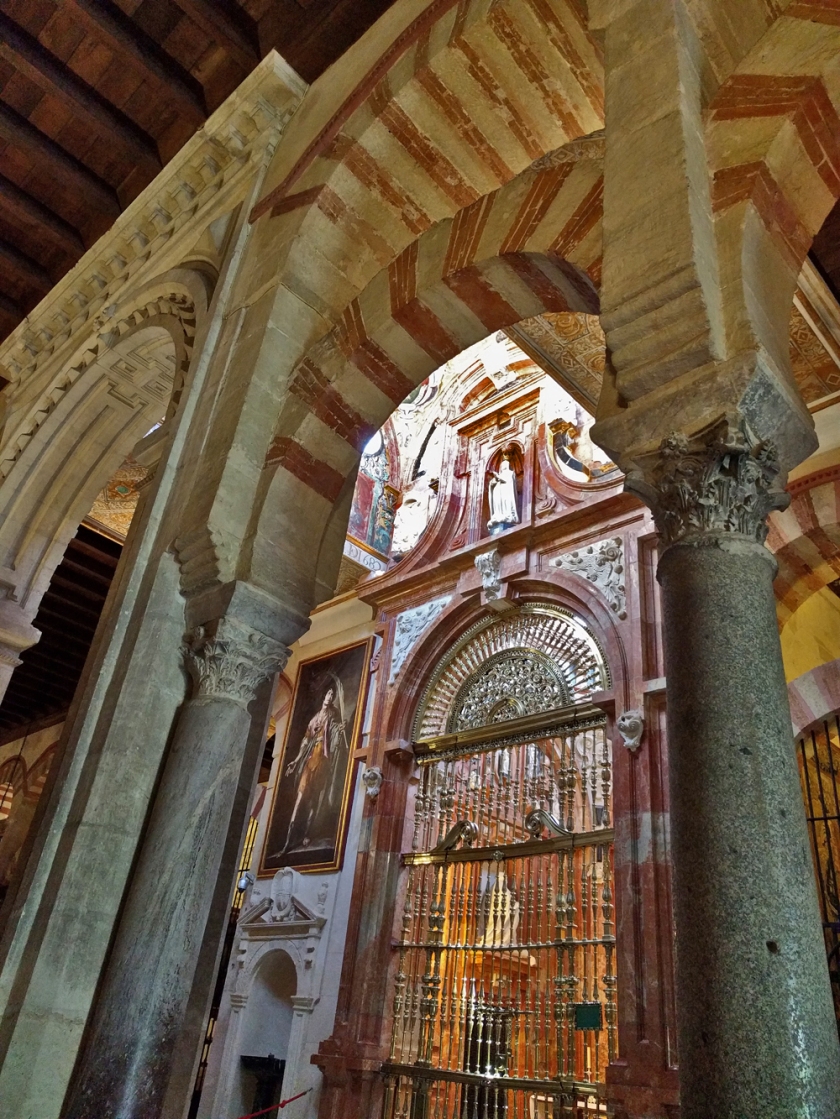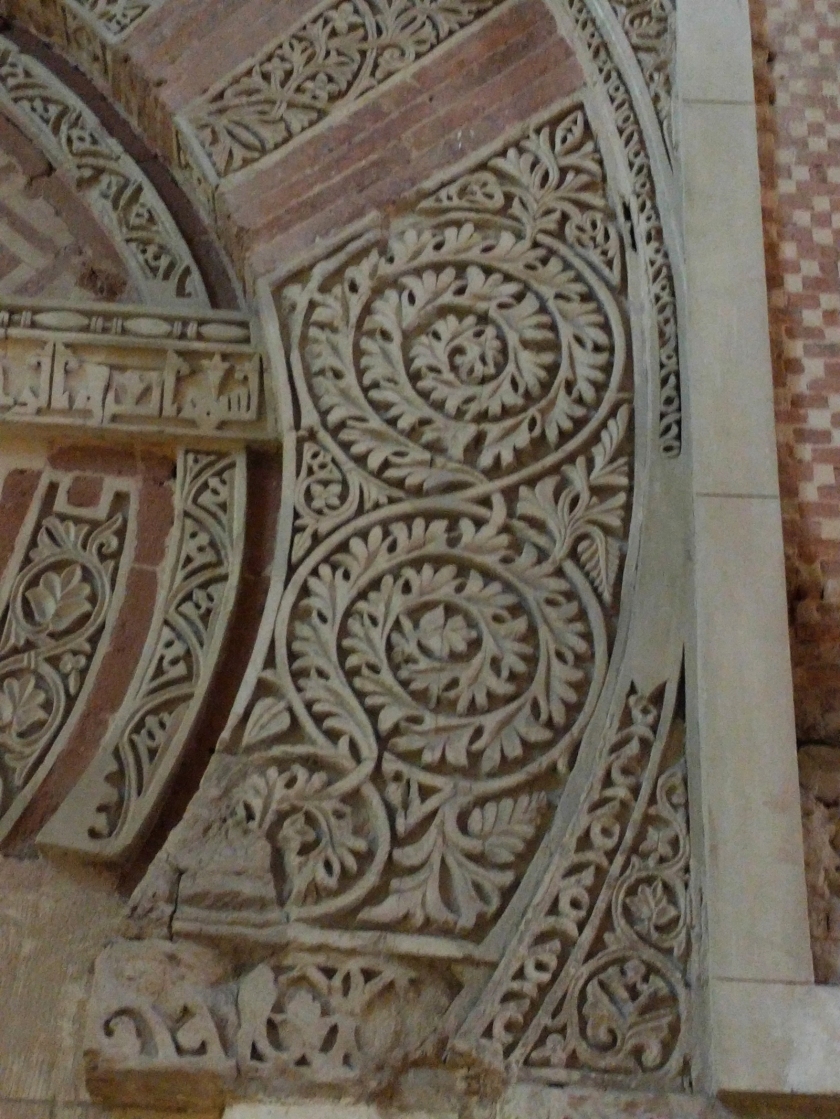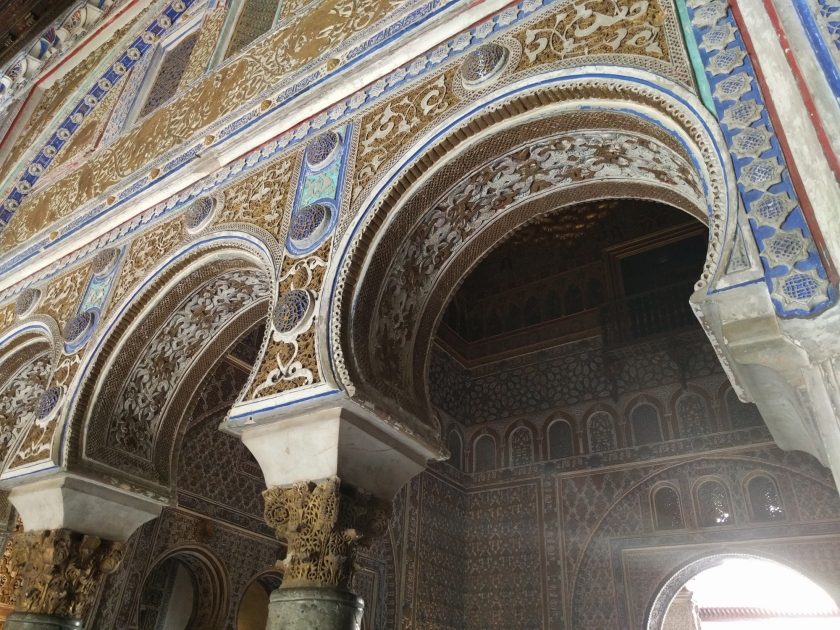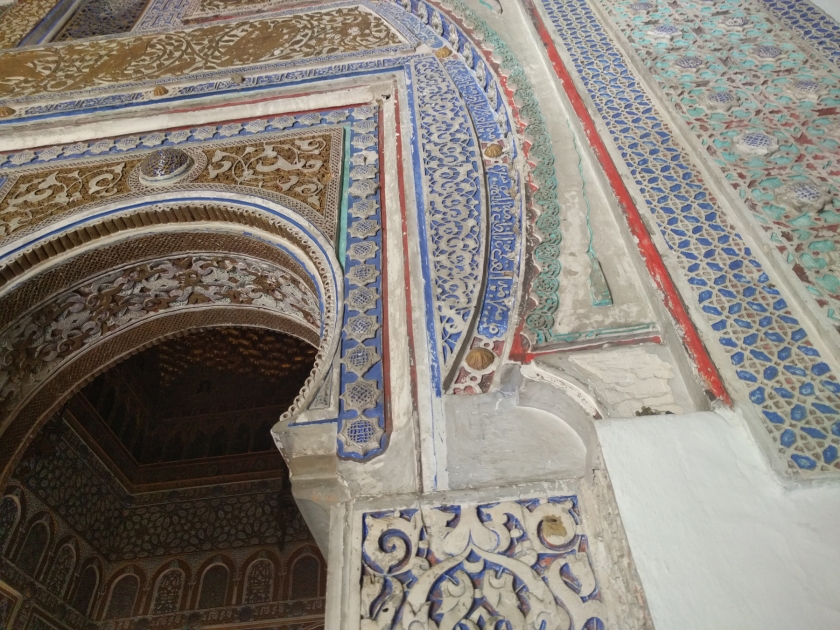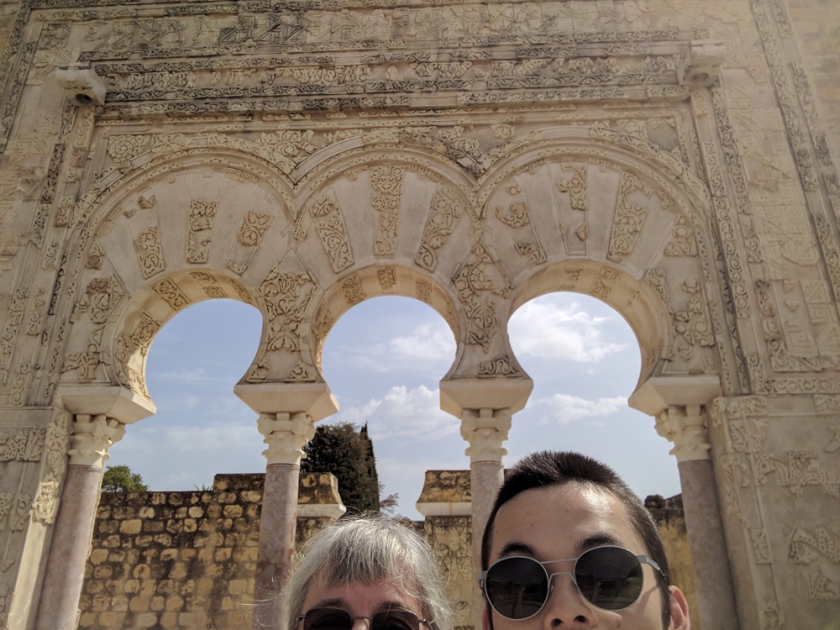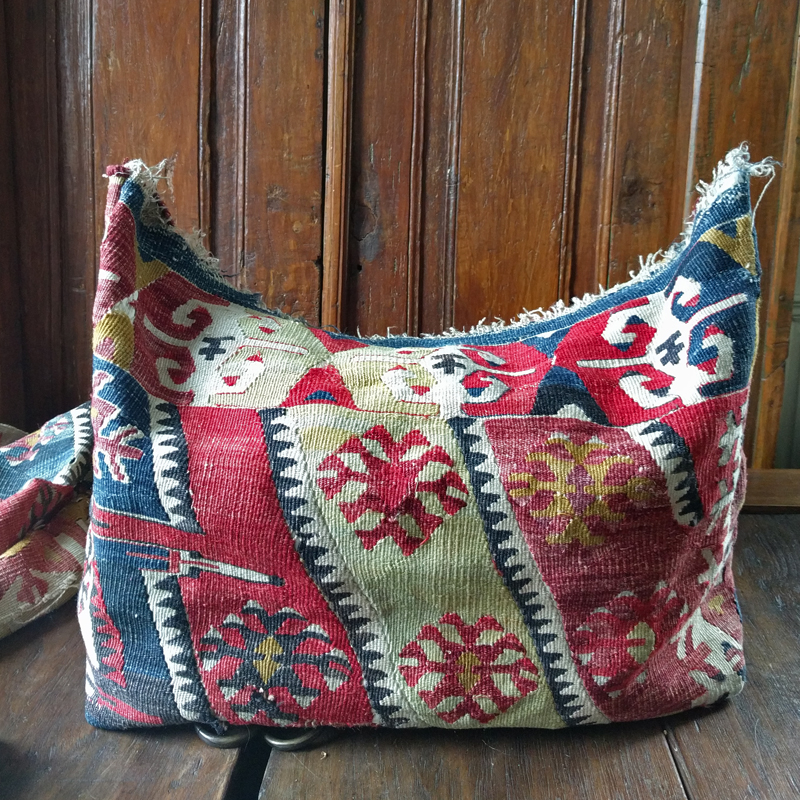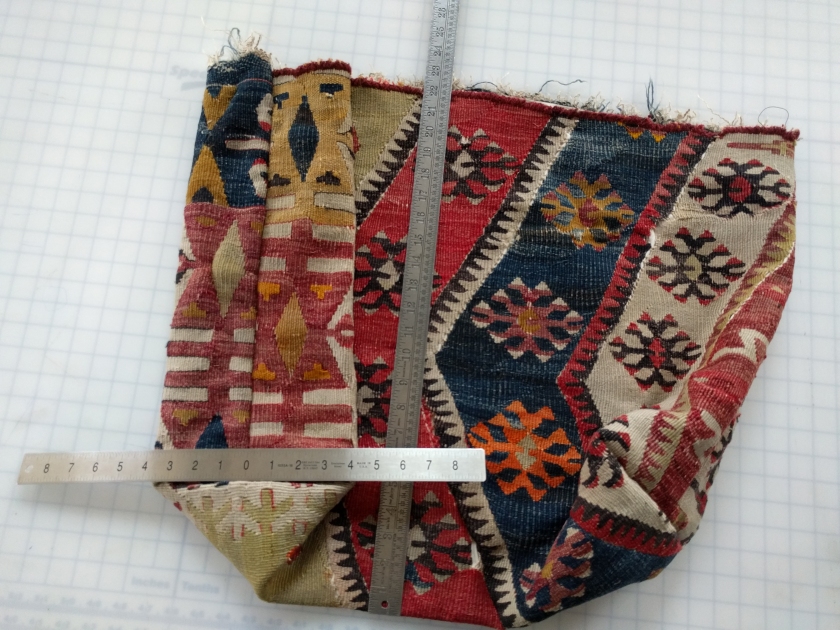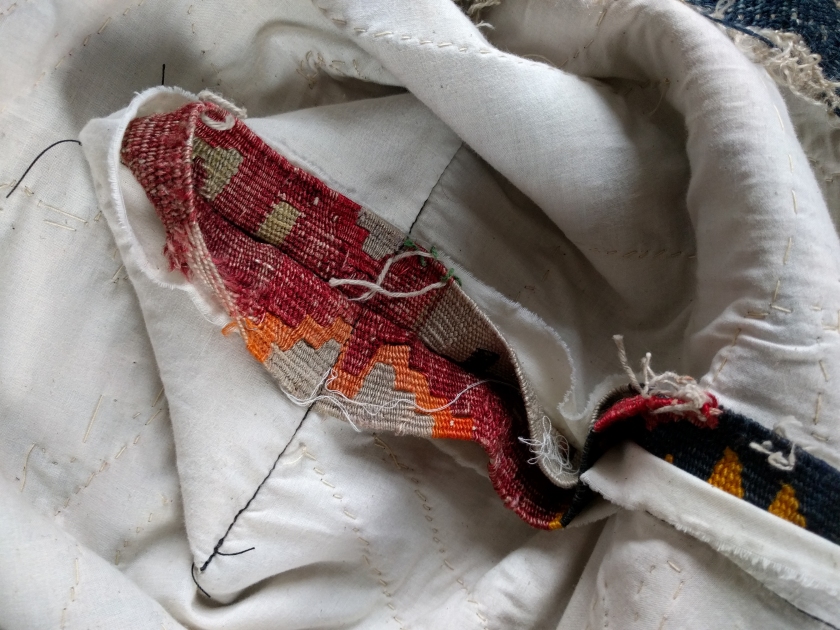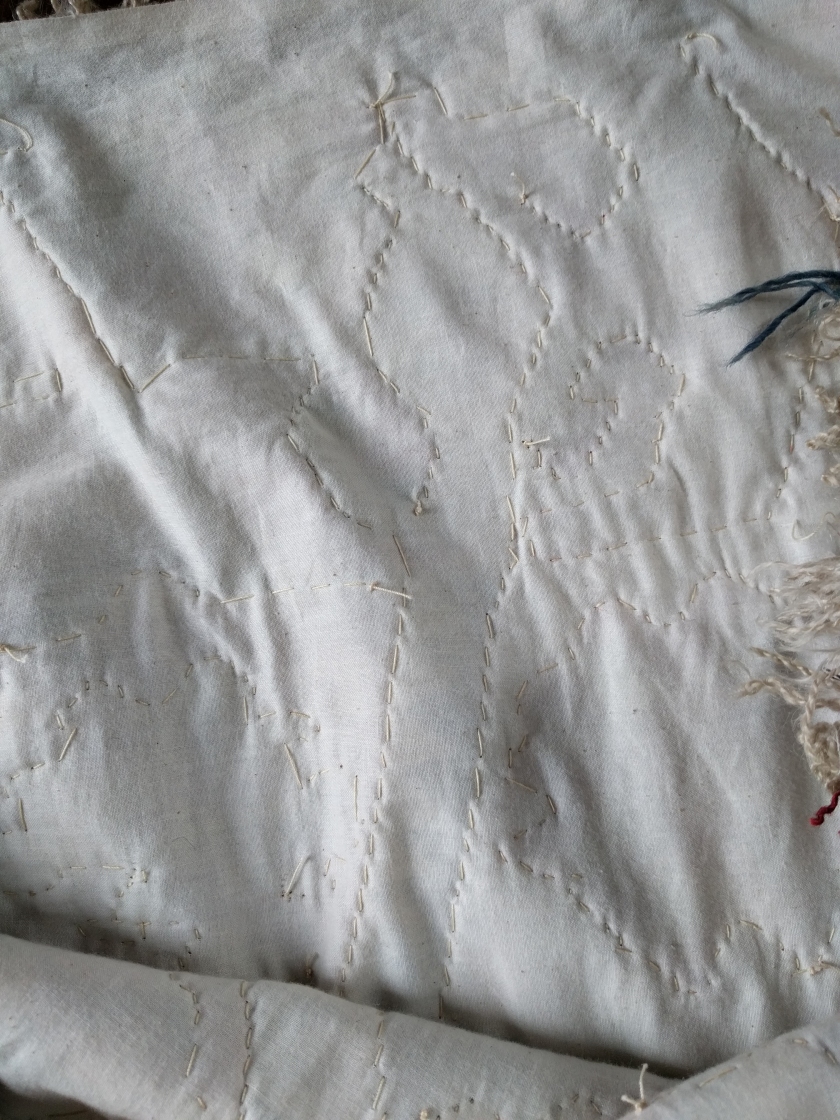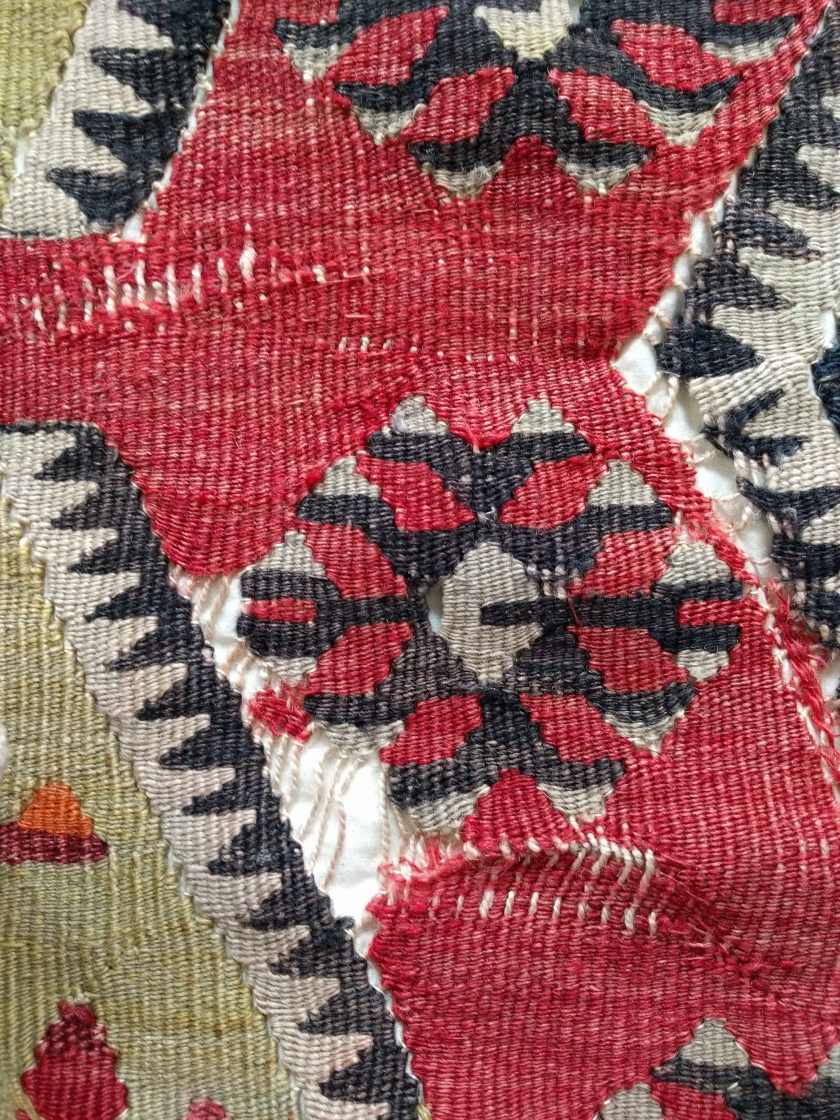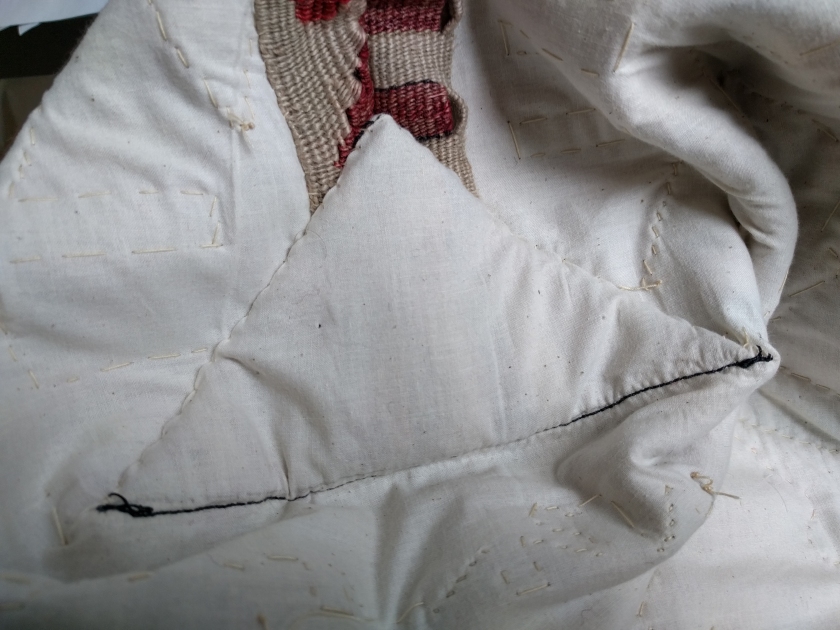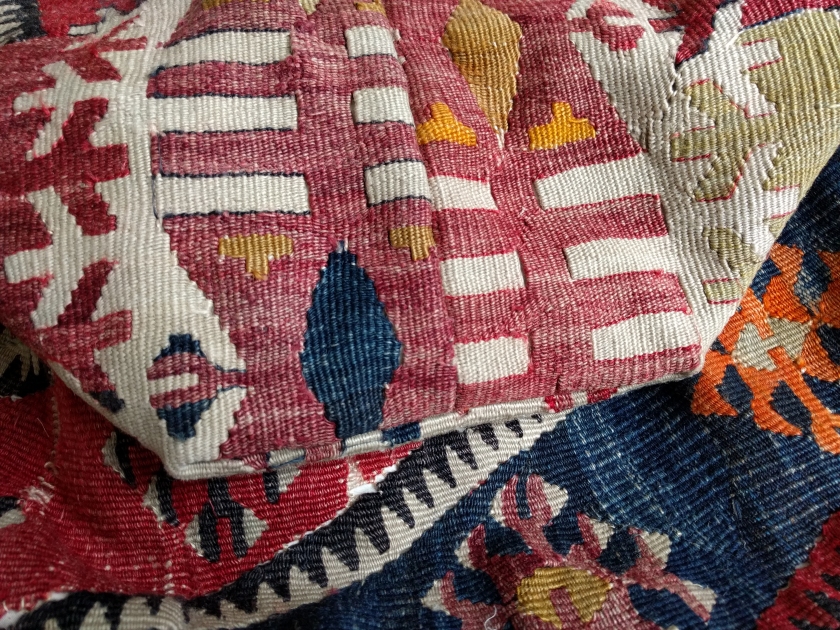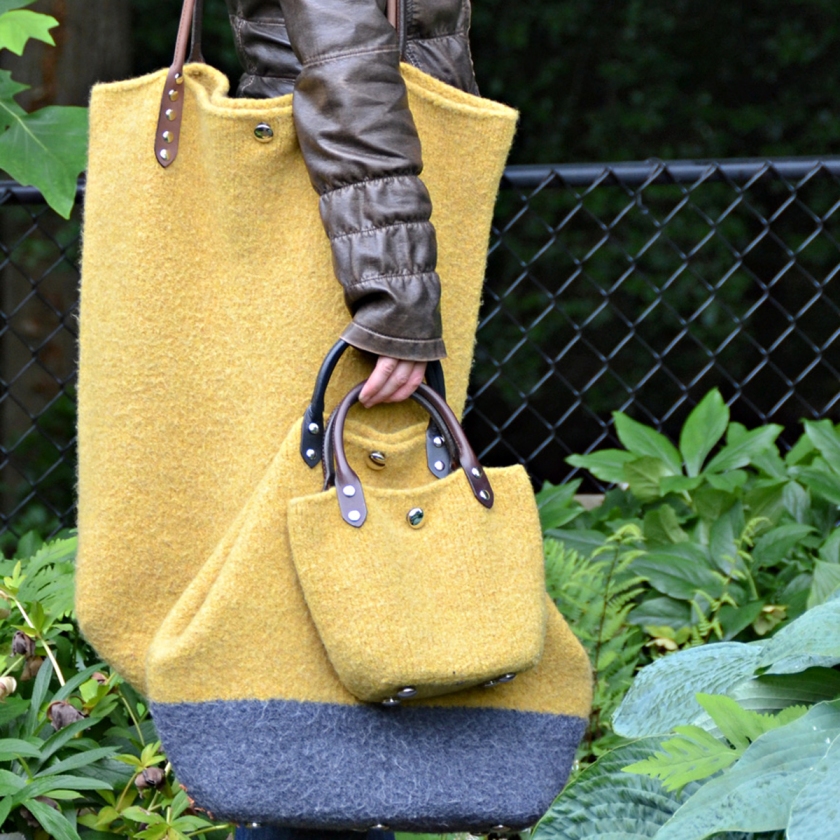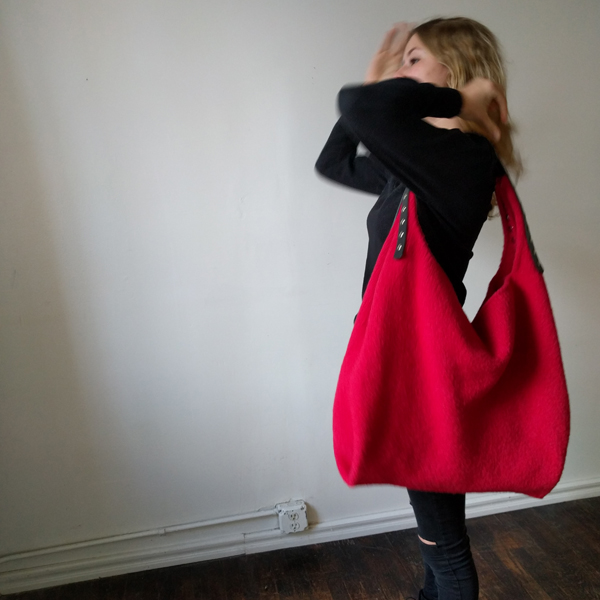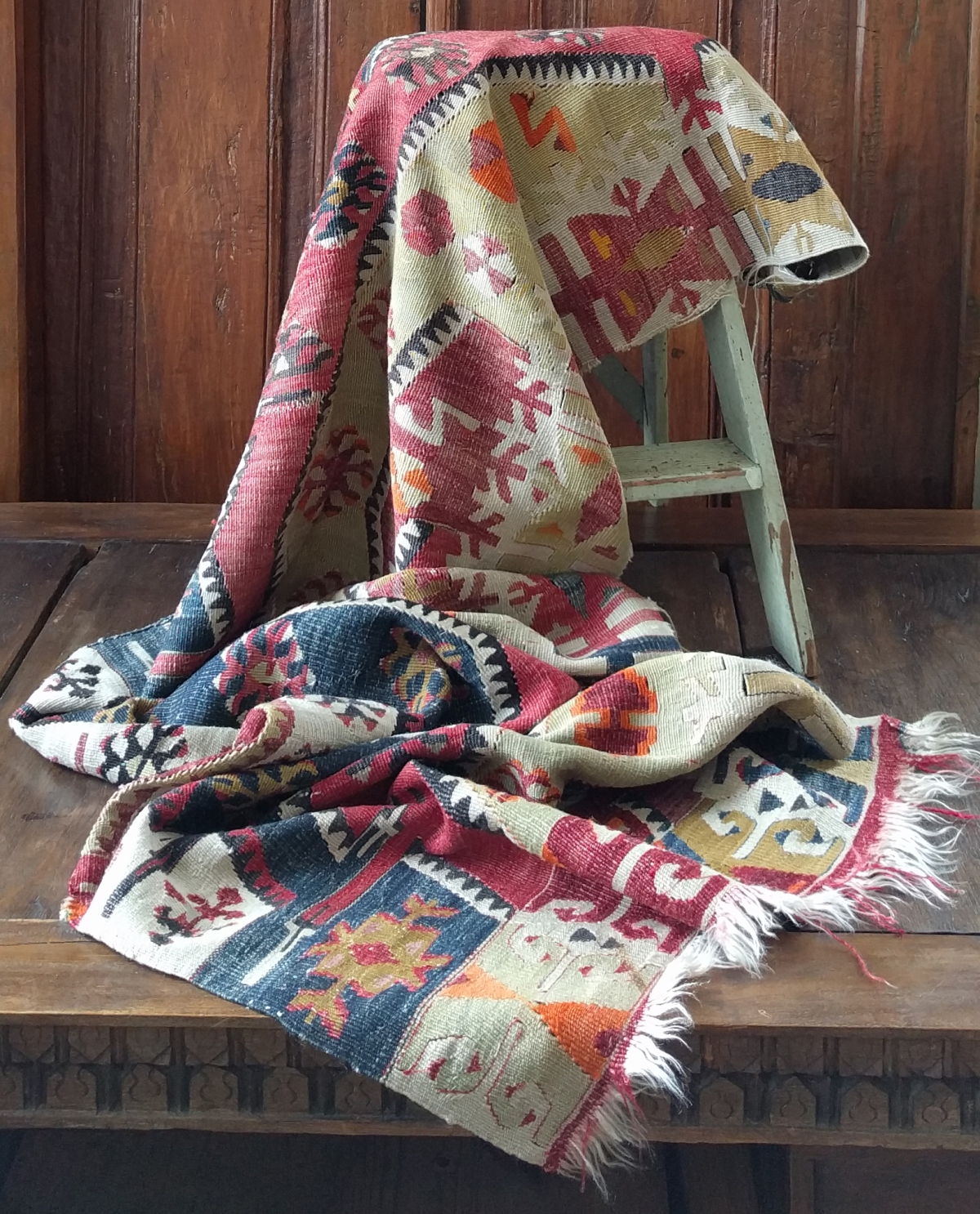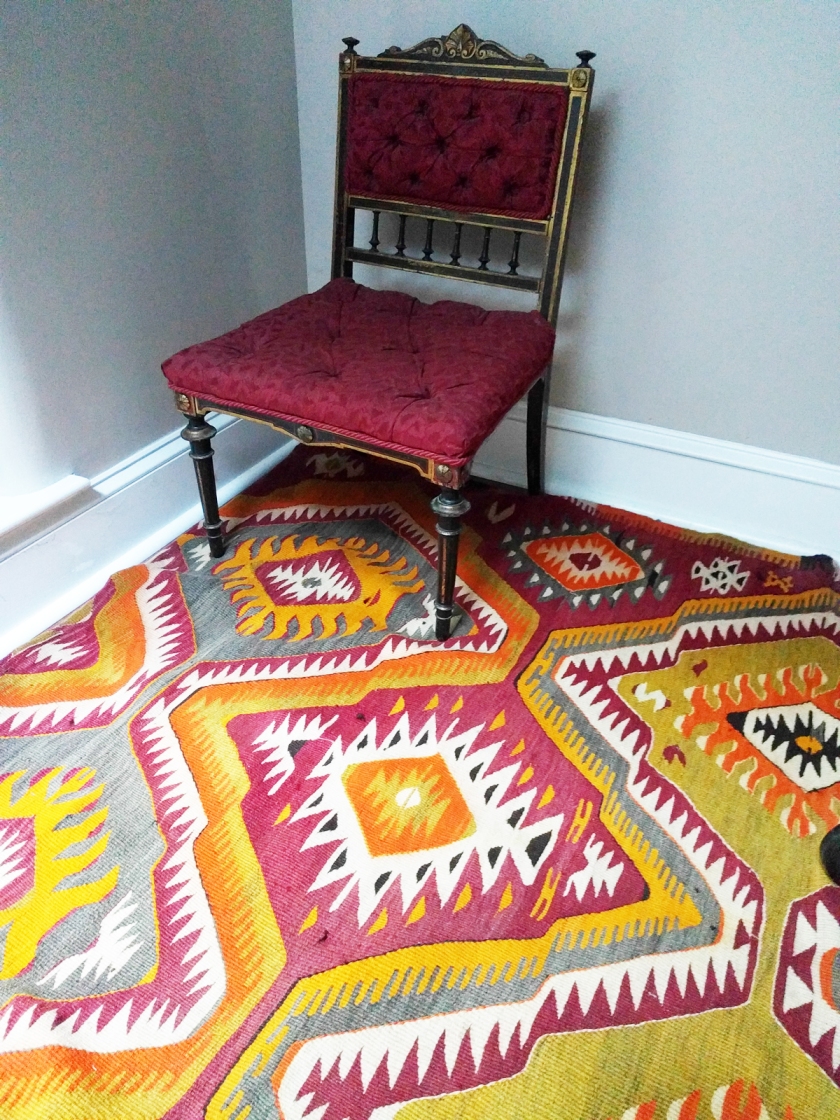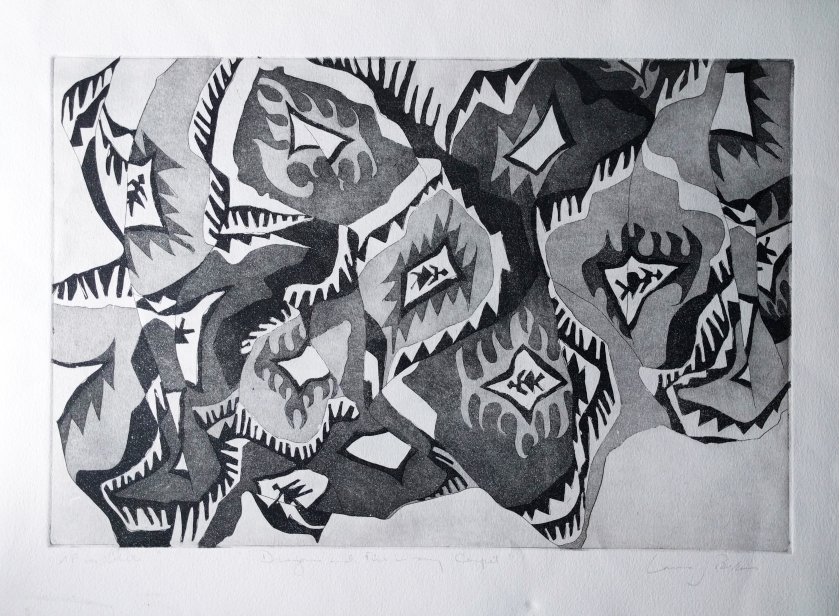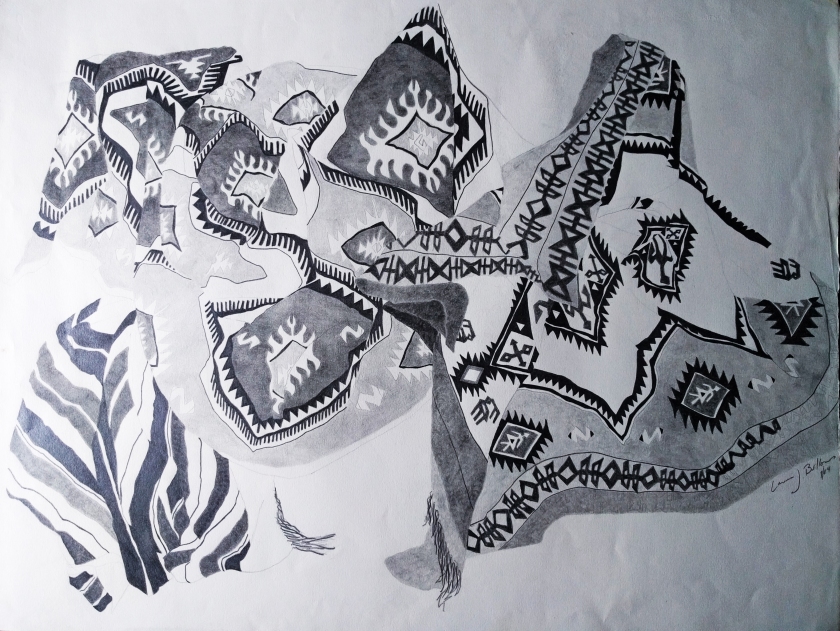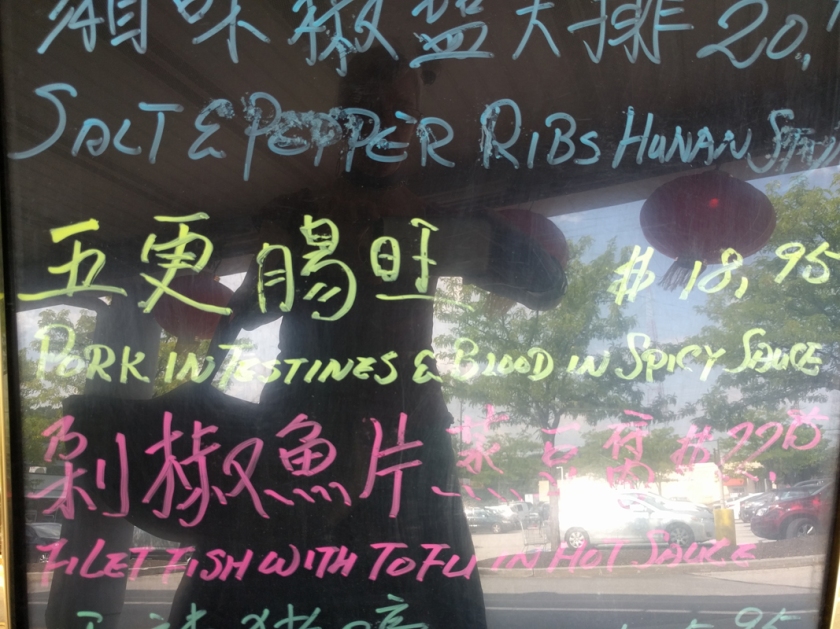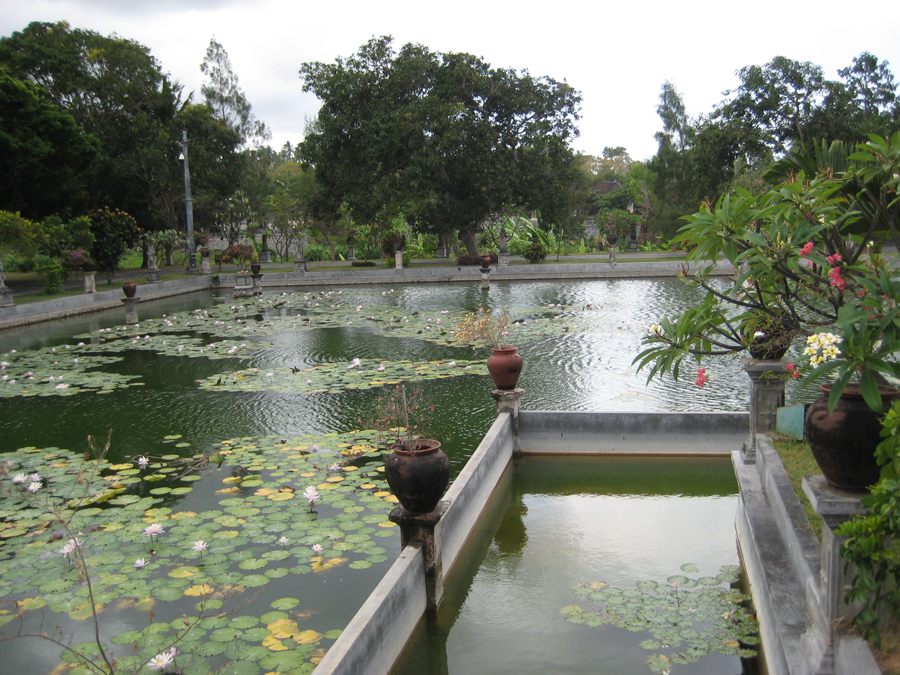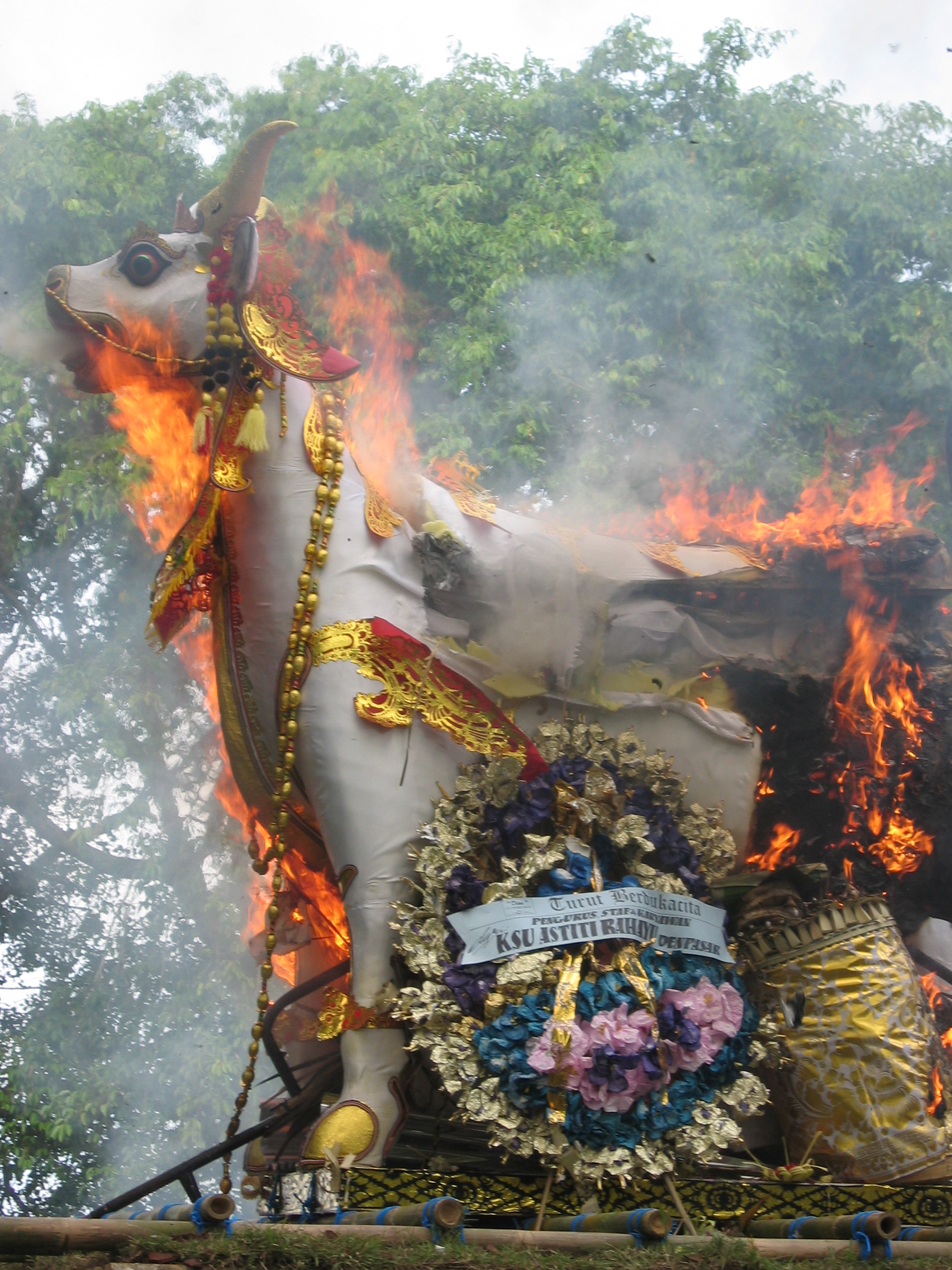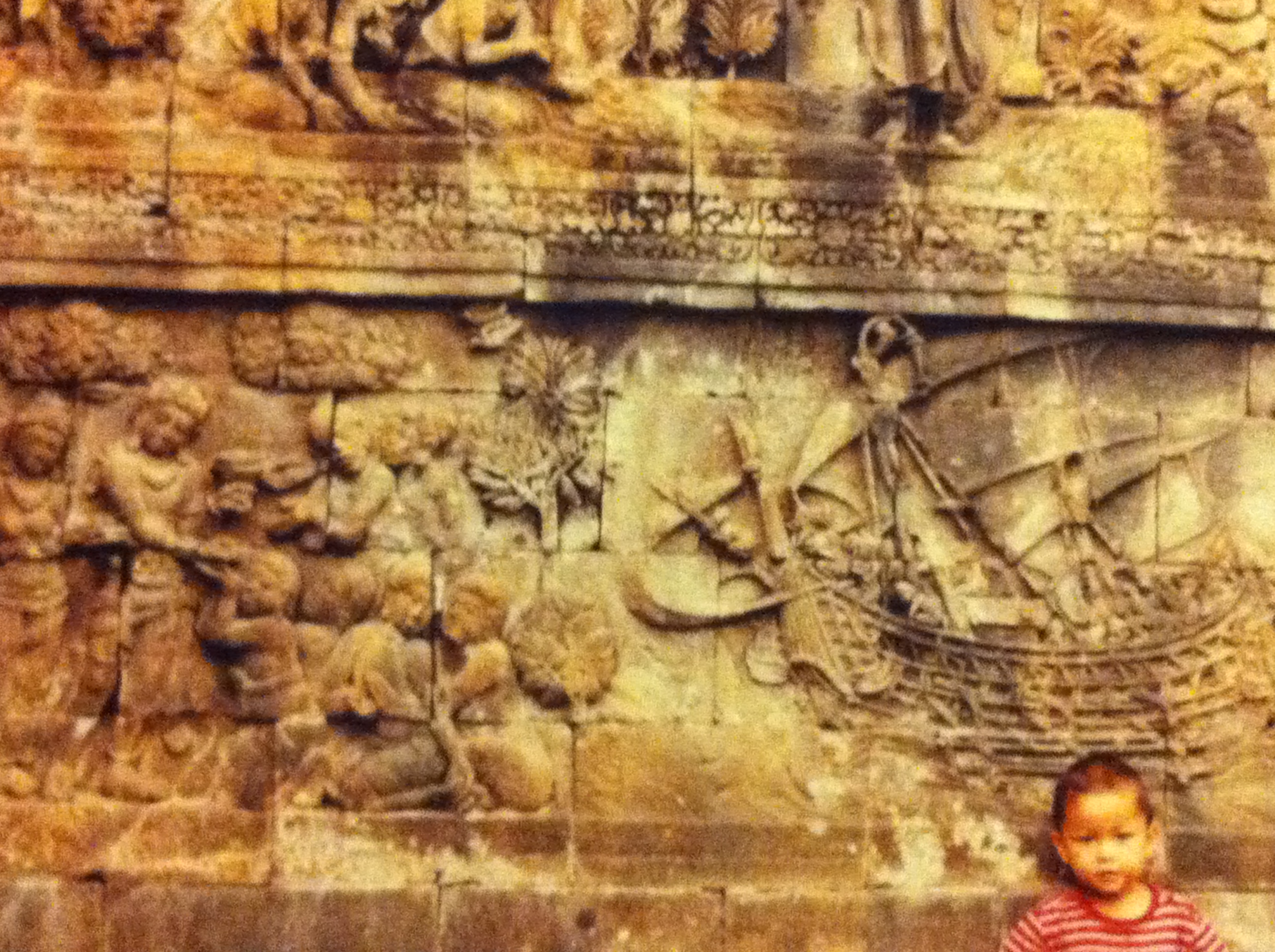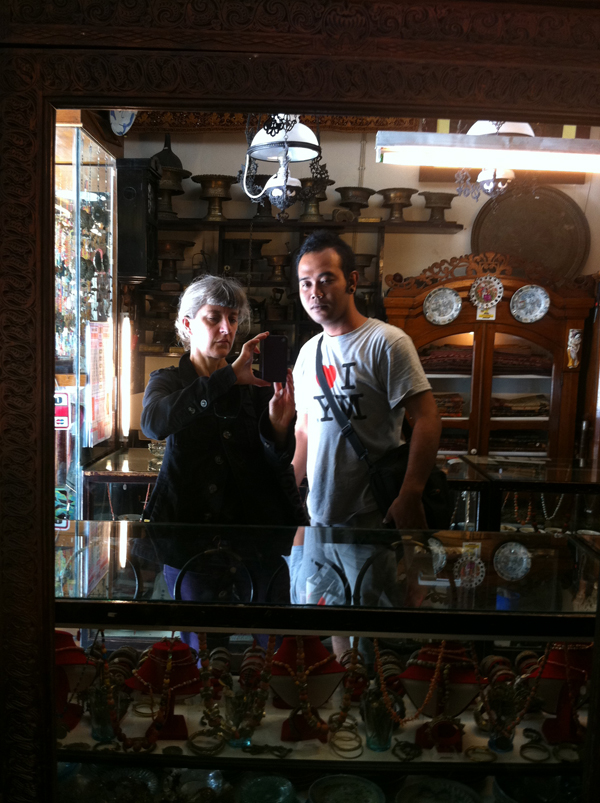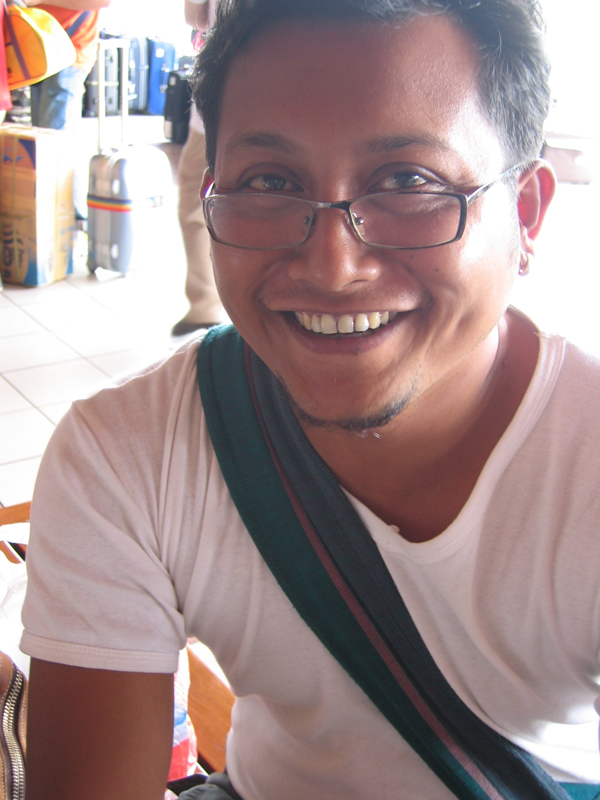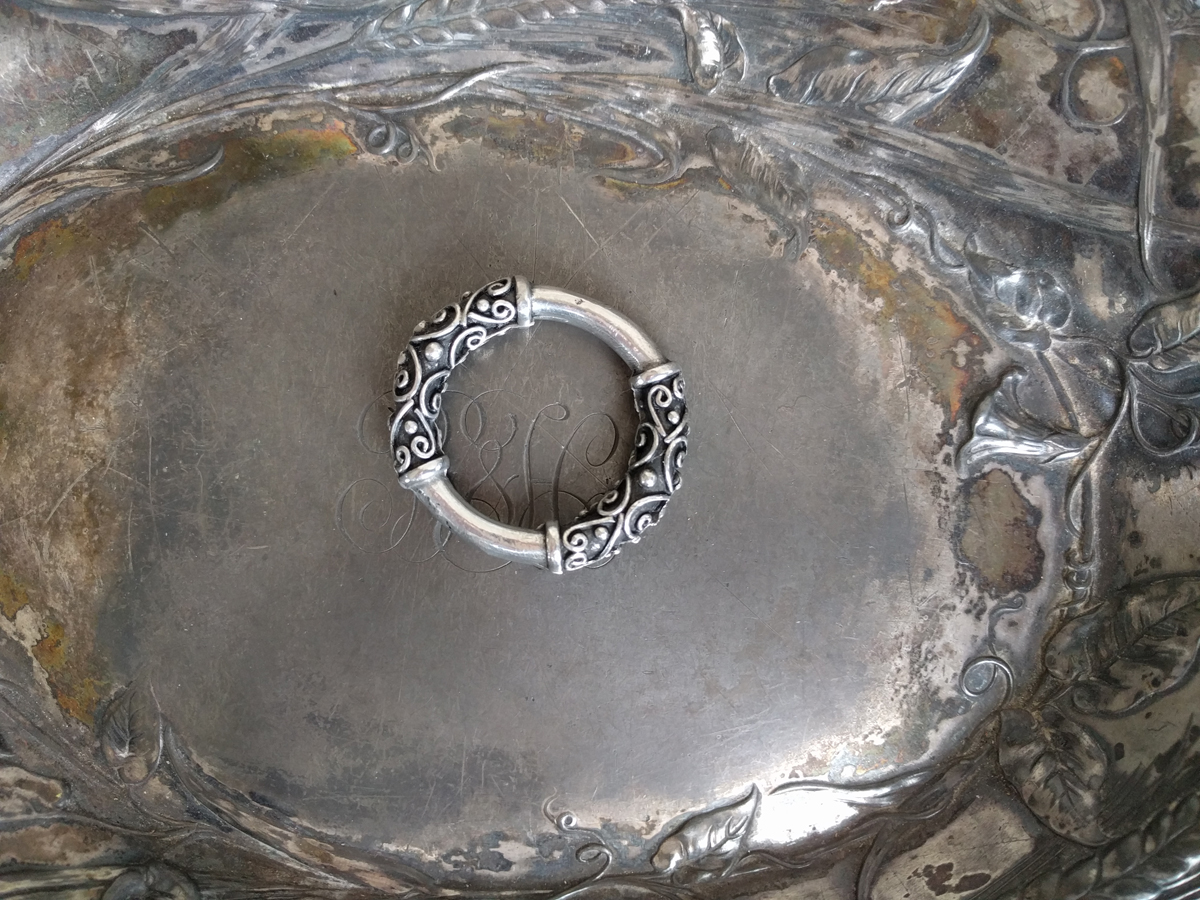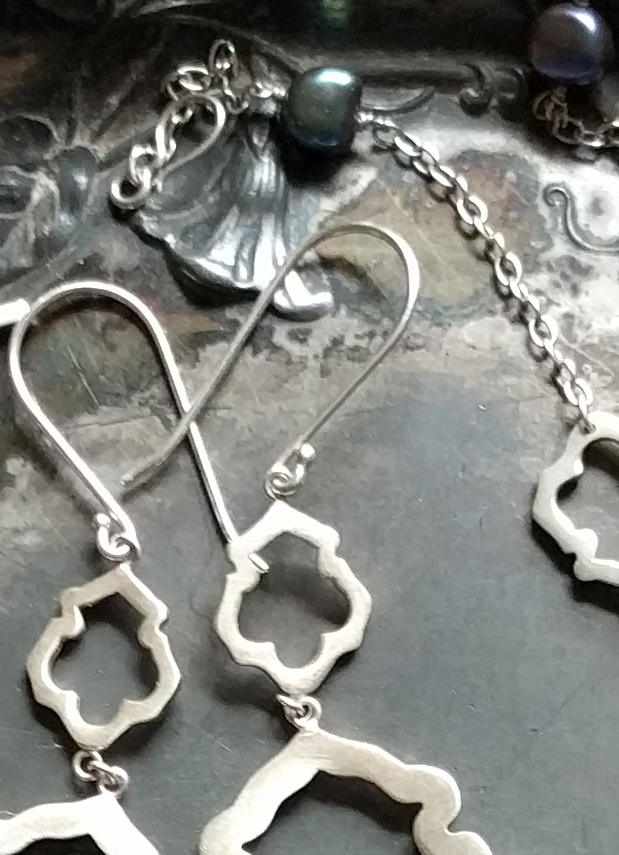I have been confronted by a problem that has stymied me and delayed the next installment in the Magic Carpet Bag tutorial as I have been trying to figure out what to do. I finished stabilizing the textile with the muslin interlining. Following that process I stitched buckram into the bag to give it body and stiffness.

When I first started, it looked like it would work brilliantly. I had pinned the buckram to the inside of the bag with safety pins, same as the muslin.

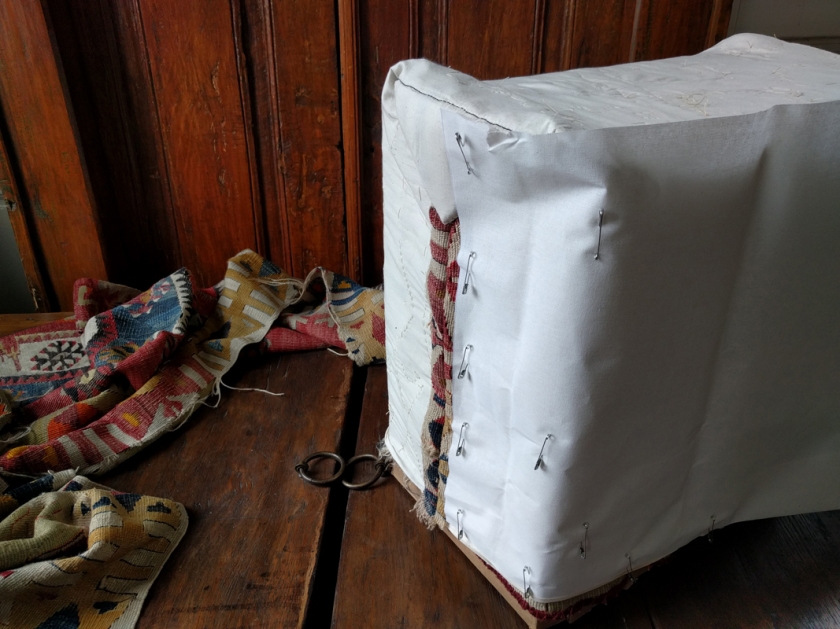
The bag stood up on its own. Fabulous! This was the precise behavior I was going for. I then attached the buckram to the textile with long basting stitches so that the buckram and the textile would act as one piece of material in the same manner as the muslin.


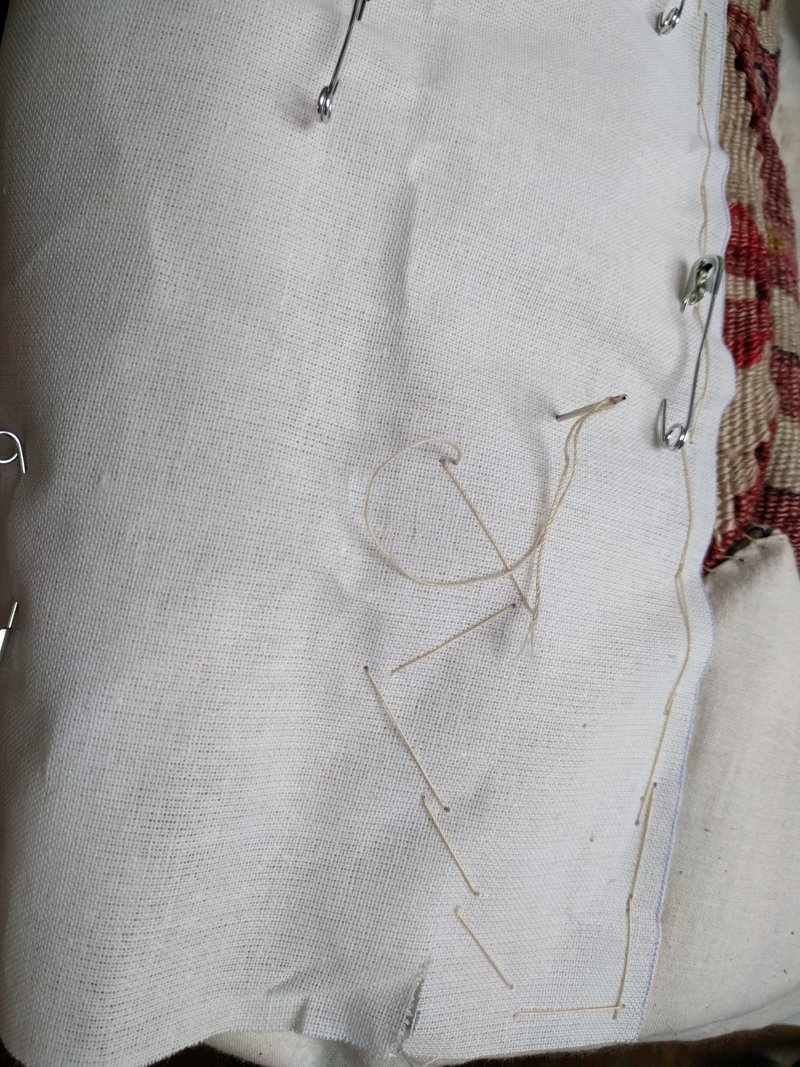
As I worked on the bag in this way I found that the buckram softened up and became more supple. When I finished, the bag no longer stood up on its own. It just slumped.

I have been trying to figure out what to do about the bag’s slumping ever since inserting the buckram in order to write the next steps in the tutorial. Then a serendipitous conversation happened and a colleague to whom I was describing this dilemma asked – why not share the challenge you have encountered?
It had not occurred to me to narrate the problem. I am working through this tutorial on the hoof. You are getting my process almost in real time, and that process includes this disruption in my expectations for how the Carpet Bag would work. This disruption has raised a whole series of questions for me. My first response was to think about the bag’s behavior as my failure: my approach to stiffening didn’t work. I obviously used the wrong material. What do I do now? Because I didn’t have ready answers, the Carpet Bag has languished in a soft slump.
But I can tell myself a different story about the Carpet Bag and ask different questions. When the young people I work with in my studio encounter a new task demanding new skills, they have the tendency to say – “I’m no good at that. I always mess things up.” I have forbidden this script in my studio and substituted an alternative script. Instead of “I’m no good at that.” I have instructed them to say “Wow, that is a technique I have never done before. Instead of “I’m no good at that.” I have offered the alternative script “I’m looking forward to building that skill.” They won’t actually say it despite my coaxing. They’re too cool for that. But I have seen a change in attitude that I think indicates they have internalized the message that never having done something before does not constitute bad skill. It just indicates no skill yet. It indicates an exciting journey not yet begun.
I now realized that, in response to my Magic Carpet Bag’s very unmagical slumping, I have been guilty of the “I’m no good at that” mindset I have tried to exorcise from my young students’ thinking. Instead, I am now choosing to see the Carpet Bag’s slump as an opportunity to think more expansively about what I expect from this bag and to respond to its characteristics in creative ways. Rather than view the bag’s behavior as my failure, I can view the bag’s behavior as an invitation to find success in an unanticipated guise. What am I going to do now? This becomes not a defeating question but an exciting one. How do I approach this design opportunity? What are my options? Which of them will I pursue?

As I have begun to change my thinking, I realize that the potential next steps I have rolled around in my mind as I have looked at the Magic Carpet Slump on a daily basis are all still assuming that I am grappling with the bag’s bad behavior which I have viewed as representing my failure. In this view, slumping is bad; I need to rectify the slump with a better stiffener approach – plastic mesh, another type of synthetic, non-woven stiffener, a stiff haircell leather lining, a stiff canvas lining, boning at the side seams, cardboard in the bag bottom, etc.
But what if I decide slumping is not bad? What if I decide that a soft bag is an excellent bag? What if I surrender to the characteristics of this particular textile, which is not stiff but rather heavy with beautiful drape. Upon reflection, I suspect stiffness in this bag would elude me without extreme interventions. It would get heavier and heavier as I added material to combat its resistance. It could easily become a Sisyphusean task that no one wants to live through by way of a tutorial, and I wouldn’t want to be the one to try to execute tasks the bag wouldn’t cooperate with. I don’t want to set myself up to give up. Our projects have to match us, our temperaments, our styles of learning and work. A Sisyphusean Magic Slump does not match me.
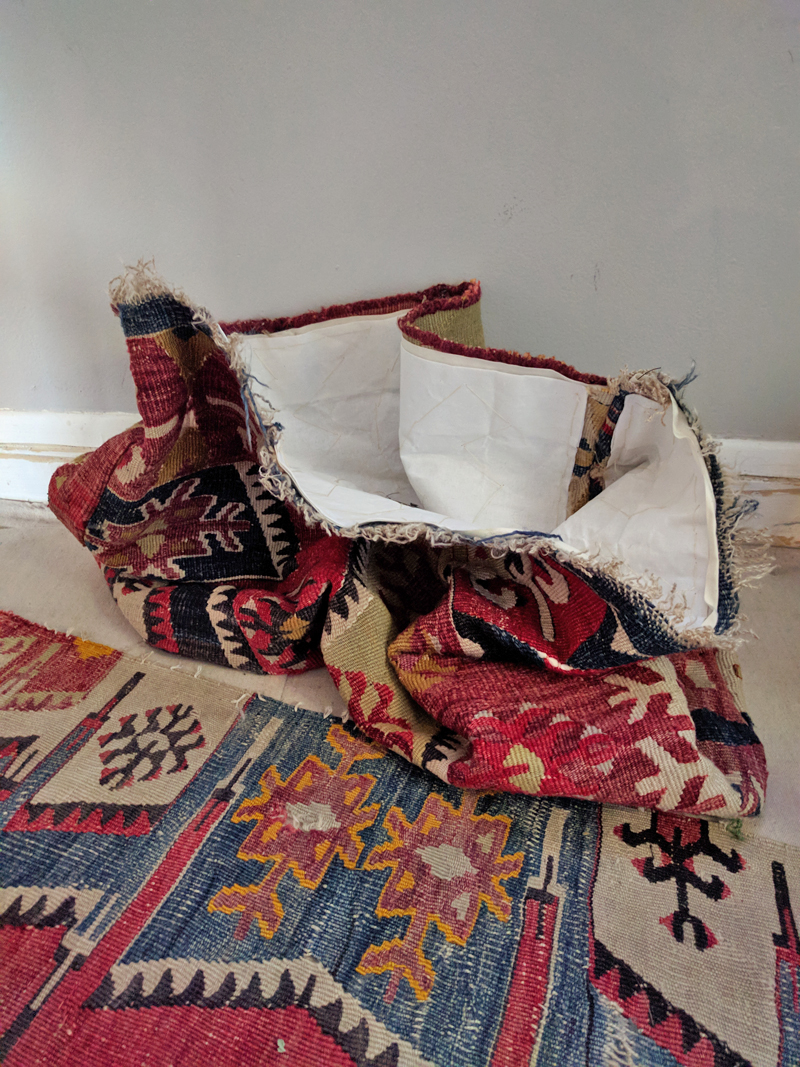
I began my Magic Carpet Bag project loving the social story of household use we can discern and imagine in the textile’s damage, celebrating its handmade-ness, preserving it. I carefully married the weaving to its interlining weft thread by weft thread. Adding the buckram gave it more body and strength, but not the stiffness I sought, and there my acceptance and excitement faltered.
If I choose to accept the Slump’s slump and to see its heavy drape, like it’s damage, as its beauty rather than its deficit, the next step in this tutorial is a combination of two things – discernment and order of operations. I’ll save order of operations for the next tutorial and just tackle discernment here. What I mean by discernment is charting the next steps in alignment with the project’s acknowledged characteristics. What does it want to be and do, and how do I work with that as I make the next series of necessary choices – lining material, closure type, handle treatment? Given what the bag wants to be and do, what is my range of options for making it mine?
Each of you, whether you are working with a handmade textile, a felted or fulled bag body, or some other found or handmade fabric out of which you have begun your Magic Carpet Bag, will need to recognize how your bag is behaving and figure out what materials and processes will work with that behavior. If you have a stiff fabric, you won’t necessarily need or want a stiff material for a lining but you may. Figure it out using visualization – imagining the bag in use, on your body, in your space – and simulation – by pinning different lining fabrics into your bag body and observing how the materials behave together and whether that behavior supports your vision. If you have a soft fabric, a stiffer lining will give it a bit more body and strength while a soft lining will retain the sensuality and hand-feel of the bag body. If your material is heavy like mine, stiffening may prove more trouble than it’s worth. If your material has alot of drape, that you really love, then choose a lining with drape rather than body so the drape of the finished bag retains the characteristics you enjoy so much.
As for my Magic Carpet Bag, I’m going to take another stab at stiffener but reserve it for the bag bottom, the most vulnerable part of the textile. The buckram I put into the bag body I have not yet extended to the bag bottom. I plan to try 2 or 3 layers. I don’t expect this to give it stiffness, but rather a bit of shape and greater strength. I have also decided to try out a lining of some tightly woven, thick, unbleached canvas I have in the studio. It’s not stiff but it’s also not soft. It’s somewhere in the middle. It will not make the bag stand up. The bag will still slump. But it will be strong enough to withstand puncture by pencils or knitting needles and will not herniate in the existing areas of damage when the bag is full.

What else do I already know? I will use a zipper as a closure and I plan on using two 16 inch Forager flat strap handles in the middle of the bag, one on each side of the bag opening. And I will use a Sling flat strap handle with tabs at the two ends of the bag.
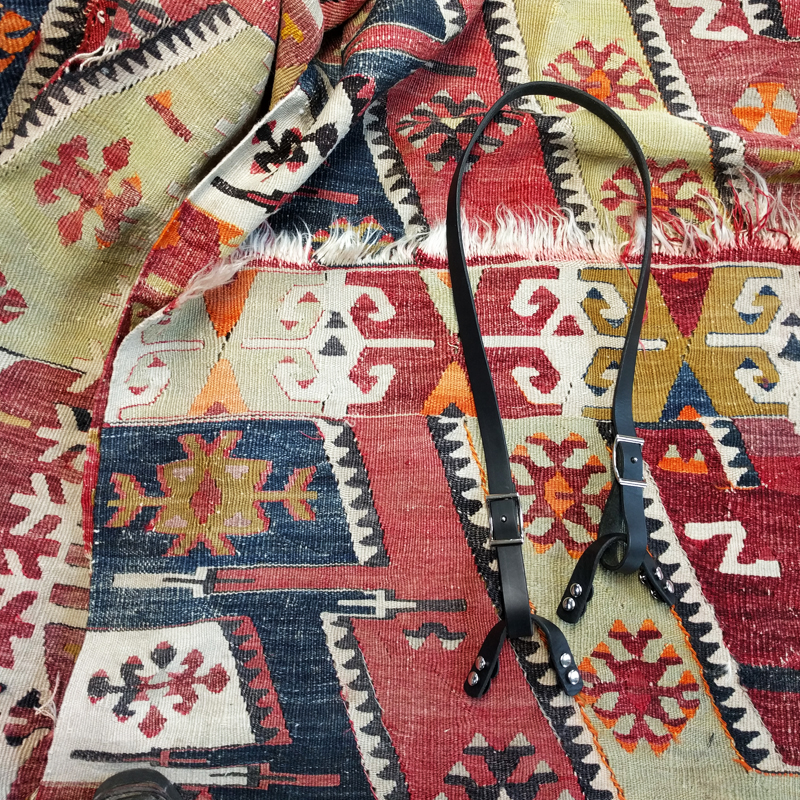
In what order will I do these steps?
Next post – order of operations.
Like this post? Pin it!
